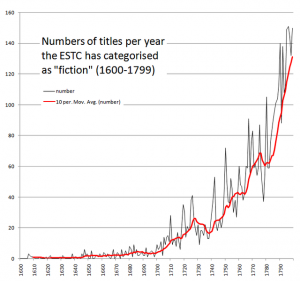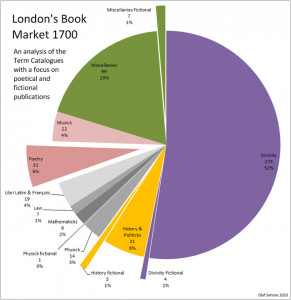Group 2
Antony H. Harrison and Beverly Taylor’s “Gender and Discourse in Victorian Literature and Art” provides a pertinent overarching frame for interpreting the perception of female characters and figures in 19th century literature. According to the editors, literature [and art] tend to reflect the social problems and concerns of the time they were produced, and literary themes often reflected women’s lives and reinforced certain behaviors. They posit that social questions of women’s education, suffrage, legal rights, and “the specter of poverty and profligacy” all manifest in literature [and art]. To that end, we explored how women’s sexuality materializes in literature of the time from both the male and female author. We will present three separate perspectives on the female character in victorian literature. The first perspective shows the female character as written by the male author (Dickens), the next will give an account of female character’s written by the female author and the final account will explain the critical reception of female characters.
The Male Author
David Holbrook’s Charles Dickens and the Image of Woman provides a great amount of insight into how women fit both into the works of Dickens and the society of which he was a part. Dickensian women fit into several archetypal molds that are rooted heavily in the concepts of sexuality and purity. The first of these is the angelic image of perfection: a chaste woman whose virtue is unassailable and whose innocence is the envy of all around her. This figure can be seen in OT’s Rose Maylie, Great Expectations’ Estella (though that one involves a lot of Pip’s own perception), and David Copperfield’s Agnes. These are the ideal women in Dickens’ worlds of the word, and are clear reflections of the Victorian ideology that women should be pure, spiritual, and not indulge their sexuality in any way (Holbrook 28). It is possible that this very set of ideals is what compelled Dickens to kill Nancy in Oliver Twist: Nancy was a good person, indistinguishable from Rose in most ways except that Nancy was a sexual creature, and for that Victorian society condemned her.
Another Character that can be seen throughout Dickens’ work is the unreliable mother. In Bleak House, both Lady Dedlock and Jenny assume this mantle: Dedlock has an illegitimate child for whom she provided no care (due in part to extenuating circumstances) and Jenny’s child just straight up died. Worth noting is that in Oliver Twist, Oliver only gains a measure of worth when it is discovered who his father was. His mother is mostly written off. Holbrook mentions that “All we do know about his childhood relationship with his mother is that, when improved circumstances made it possible for him to leave the humiliating work work he endured pasting labels on blacking bottles, his mother insulted his soul by determining to keep him at the toil he loathed” (28). This relationship likely played a large role in the creation of the women about whom Dickens writes, and explains why women and mothers in particular are often cast in a poor light.
The Female Author
In his essay “Jane Eyre and the History of Self-Respect” Paul Schacht provides insight into the social conditions of female sexuality as represented in Charlottes Bronte’s Jane Eyre. Schacht explains that Jane’s sense of cleanliness (purity, celibacy) is that of a society, which oppressively regulates women’s sexual behavior and tends to be suspicious of sexual pleasure altogether. At Thornfield and Lowood, against the tyranny of gender (Brocklehurst etc.), Jane stages her revolt within, rather than against the external institutions that constrain her. Limited results, but internal struggle leads to self-actualization, and self-respect, which allows one to outwardly challenge these external institutions, as she does later in the novel. Schacht goes on to write, “Such domestic zeal was not unusual among Bronte’s feminist contemporaries, who often based their claims on natural rights, while remaining wedded to natural roles. The attitude of these early activists toward ‘womanly and domestic employment’ was that of Shirley’s Rose Yorke: ‘I will do that, and then I will do more.’” (Schacht 1991). That this “domestic zeal was not unusual among Bronte’s feminist contemporaries,” This excerpt identifies the notion of accepting certain domestic roles while maintaining a feminist sort of freedom. The fact that Schacht explains that this, “domestic zeal was not unusual among Bronte’s feminist contemporaries,” complicates the modern perception of feminism and forces the reader to view a Victorian perception of feminism that may reinforce feminine stereotypes even regarding sexuality.
Critical Reception
In her essay “Feminine Sensationalism, Eroticism, and Self-Assertion: M.E. Braddon and Ouida,” Natalie Schroeder makes the claim that feminism in women’s fiction was a major concern of contemporary critics. These critics viewed self-assertive, “masculine” behavior (read: unchastity), as a threat to Victorian society. Furthermore, critics like E.S. Dallas weighed in, saying that feminine aggression was unnatural. He reckoned that females in literature ought to be accompanied by “an evident access of refinement”, while he claimed that the opposite was occurring. He continues to say that women’s lives are not lives of action, so when they are put at the forefront of a plotline, they are therefore placed into a false position. In return, Schroeder points out that Victorian women resisted the roles that were conventionally assigned to them, rejecting “the prudish moral tone that characterized popular fiction of the 1850s.” They effectively began to rebel against the establishment. One can see from this criticism the gender-dominated society that fueled expectations of women in society, and also regulated the image of female characters in Victorian literature.
Discussion Question: Understanding that Dickens and other Victorian writers would not explicitly express female sexuality, how do female characters in Bleak House fall into this Victorian view of sexuality?
Sources:
David Holbrook’s Charles Dickens and the Image of Woman
Antony H. Harrison and Beverly Taylor’s Gender and Discourse in Victorian Literature and Art
Elizabeth Lee’s Victorian Theories of Sex and Sexuality
Natalie Schroeder’s Feminine Sensationalism, Eroticism, and Self-Assertion: M.E. Braddon and Ouida
Paul Schacht’s Jane Eyre and the History of Self-Respect
Posted by: Kevin O’Connor
Group Members: Colin Peartree, Michael Stoianoff, Michael Adams, Hannah Glaser, and Kevin O’Connor


